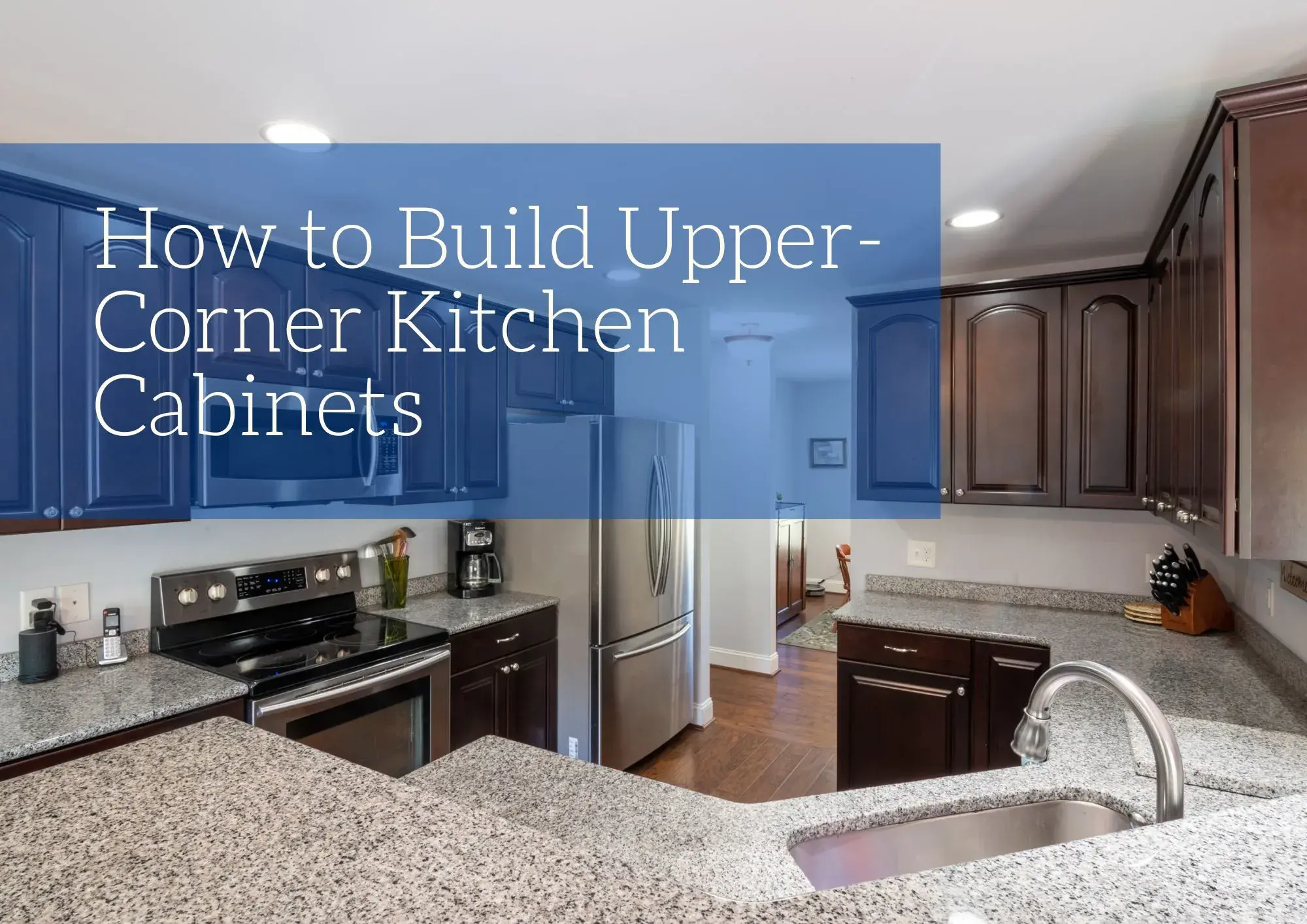If you’re facing the challenge of making the most of a small kitchen space, you’re in the right place. We’ll take you through the steps of crafting upper-corner kitchen cabinets designed specifically for small kitchens. These clever cabinet solutions not only maximize your storage space but also add a touch of functionality and style to your kitchen. Whether you’re a DIY enthusiast or just looking for practical ways to optimize your kitchen layout, this guide will help you build upper-corner cabinets that make the most of every inch. Say goodbye to wasted space and hello to a more efficient, organized, and beautiful kitchen!
Building Upper-Corner Kitchen Cabinets
- Begin by cutting a piece of plywood to match the depth of your cabinets, excluding the front frame. If your top cabinet boxes are 11 ¼ inches deep, a 4-foot wide piece of plywood should yield four strips.
- Next, measure the width of your cabinet boxes, excluding the face frames and filler strips on either side. Use a miter saw to cut the strips to the appropriate length. You should have a top and bottom piece, two side walls, and a back wall within the frame.
- Arrange the pieces in a way that allows for the drilling of pocket holes along the perimeter of the back wall and at the top and bottom of the side walls.
- Join the back to the bottom board using glue and pocket hole screws, ensuring it’s flush with the rear edge. Then, attach the sides with the pocket holes facing outward. Finally, finish the assembly by adding the top board, and inspect the box by turning it over.
- While completing the boxes for the remaining cabinets along the fridge wall, repeat the same procedure. Then assemble all components into one large unit, placing dividers where the separate cabinets meet to approximate their width.
- Begin the box installation by screwing through the rear wall. Insert just one or two screws through the box’s bottom into the cabinet frame below. After this, prepare to create face frames using glue and pocket hole screws to cover the front edge of the boxes.
- For accommodating extra filler strips beneath or at cabinet intersections, rip several stiles as needed. Plan to include an additional stile above.
- Once the stiles are prepared, attach them to the front of the boxes using glue and screws.
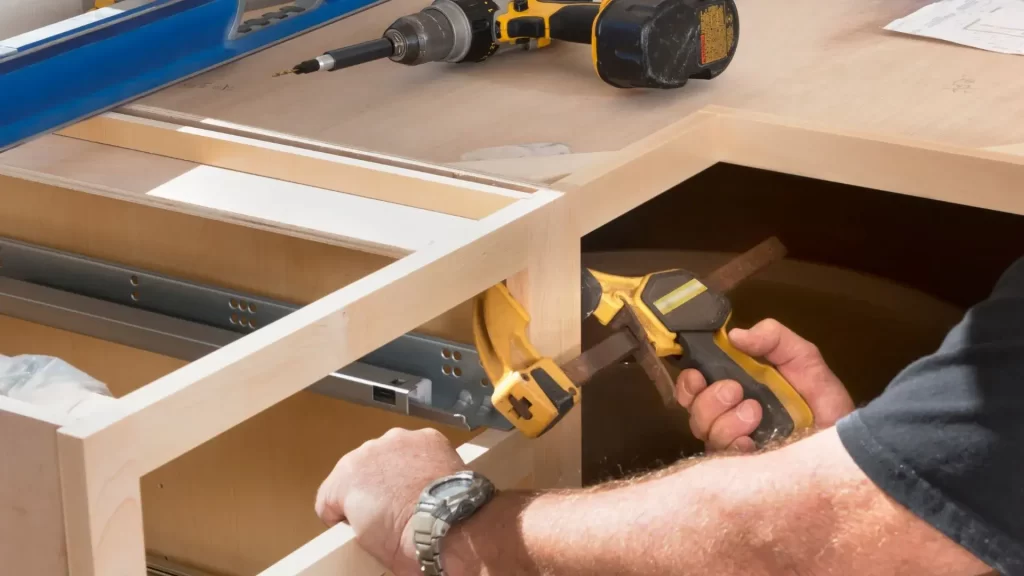
Upper-Corner Kitchen Cabinet Ideas
White Cabinets and Wood Floating Corner Shelves
Gray-washed wooden floors would perfectly match the sleek stainless steel and black appliances. Add white cabinets both above and below a white countertop, while wooden floating shelves make the most of the corner space, holding kitchen essentials, elegant china, and even a touch of nature with potted boxwood plants.
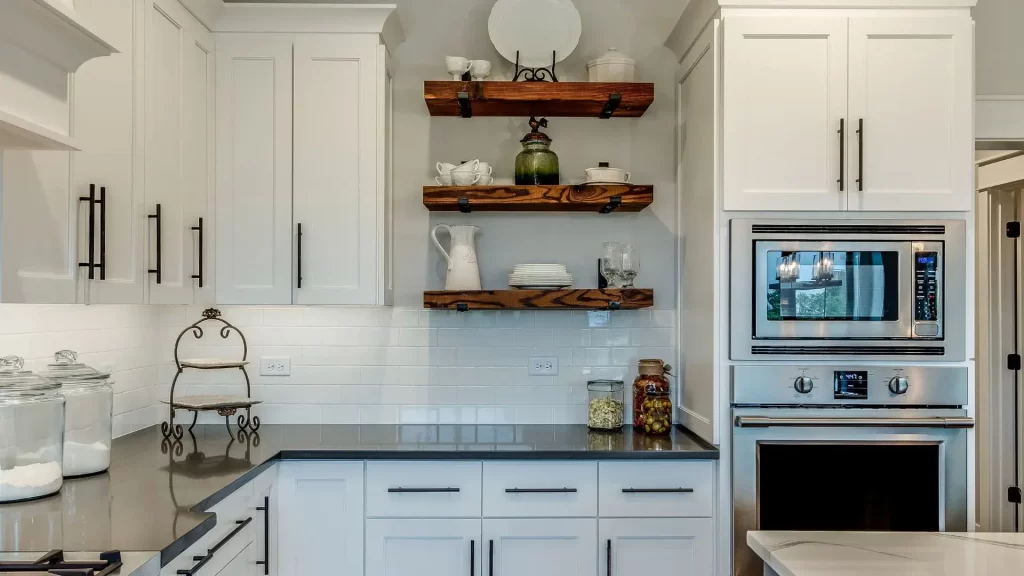
Upper and Lower Cabinets
These cabinets make for a consistent theme, extending both above and below the countertops. To add a touch of contrast and tie it all together, add a white subway tile beneath the upper cabinets featuring striking black grout, and harmonize with sleek black hardware throughout the space.
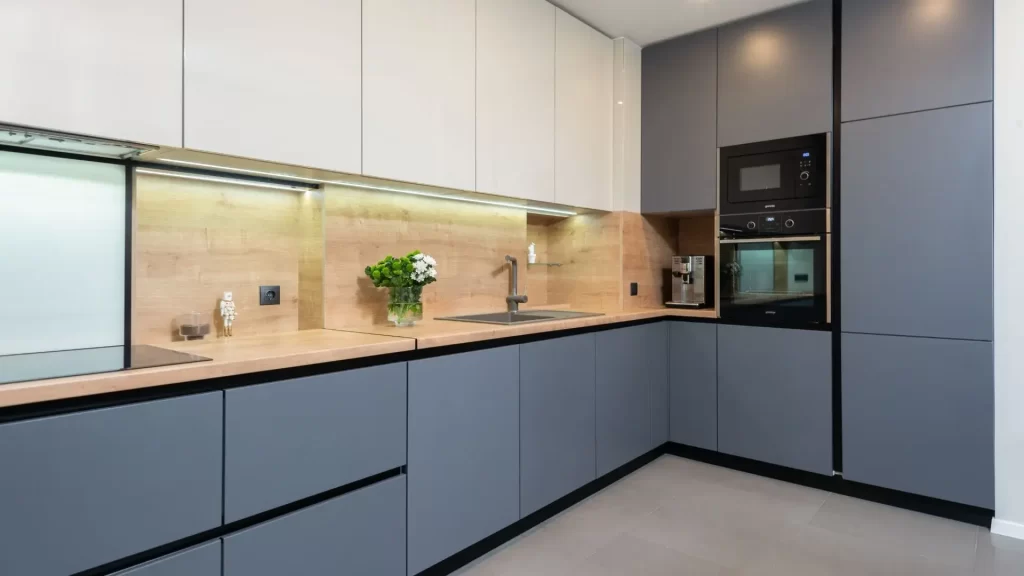
Kitchen Cabinets Alternative
Consider the rustic charm of raw wood floating shelves beautifully complementing an elegant herringbone tile backsplash in your kitchen. Flanking either side of the window that gracefully runs along the marble countertop and stone gray shaker cabinets adorned with bronze hardware, you’ll find sleek black sconce lights that complete the space with a touch of modern sophistication.
Open-faced Cabinets
Instead of using the same cathedral-paneled doors for all the cabinets, consider keeping the corner cabinet open, so the door doesn’t bump into the other cabinets. The dinnerware is stored in a cabinet where you can see it easily for convenient access and organization.
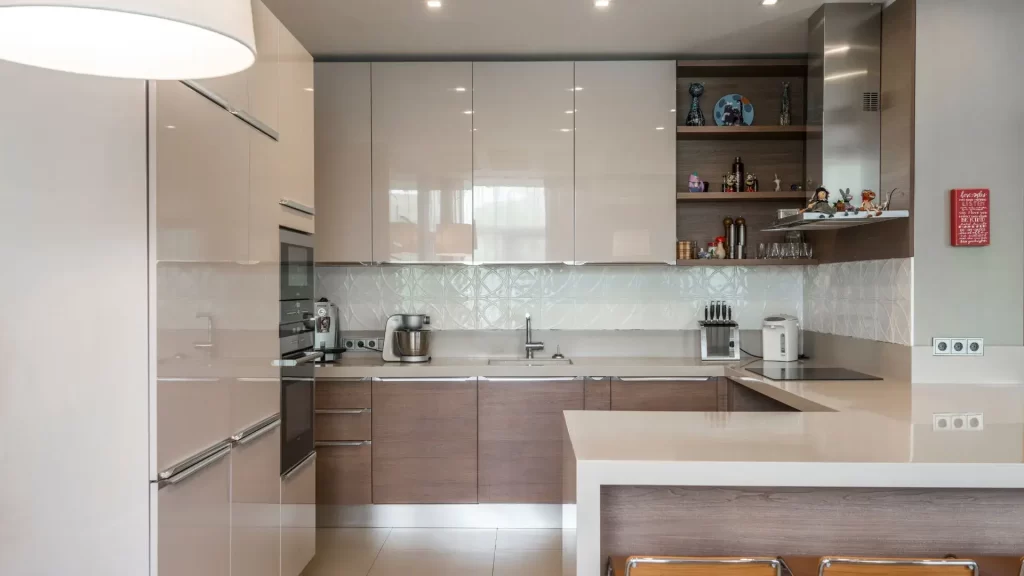
Cathedral Door Cabinets
Classic cathedral panel cabinets frame a white subway tile backsplash with bold black grout. The cabinets elegantly curve around the kitchen’s corner, giving the room a cozy, well-utilized feel.
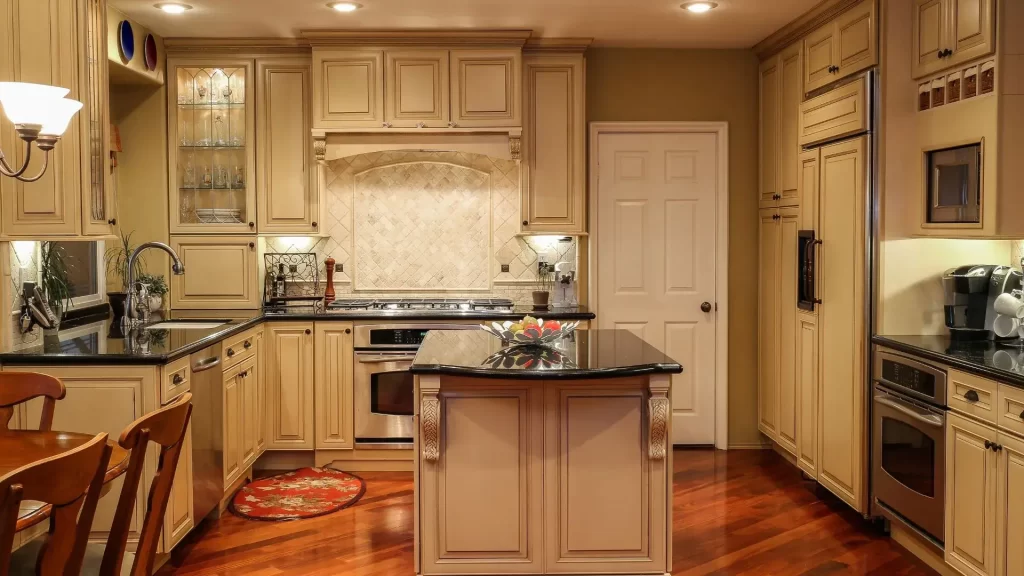
Becoming proficient in crafting upper kitchen cabinets is a gratifying pursuit that can significantly elevate both the utility and visual appeal of your kitchen. Remember, patience and attention to detail are key, and as you gain experience, your skills will only improve. So, roll up your sleeves, gather your tools, and get ready to create beautiful, custom upper kitchen cabinets that will transform your kitchen into a space that reflects your unique style and meets your practical needs.


